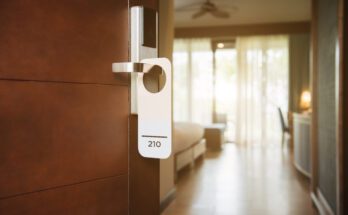Keeping Up with the AL West’s Prospects
I started with the National League East; below is my look at the American League West, covering players who have appeared in big league games. The results of the changes made to player rankings and evaluations can be found over on The Board, though I try to provide more specific links throughout this post in case readers only care about one team.
A rash of injuries has necessitated several pitching prospect promotions in Houston. Cristian Javier (ranked second in org) and Brandon Bielak (fifth) have been up the longest, and both have struggled in unexpected ways. Bielak, who threw lots of strikes in the minors, has wrestled with walks. He might be nibbling with his fastball because it’s getting crushed to the tune of a 90% in-zone contact rate and a .674 xSLG according to Baseball Savant. He’s been bullpenned for now, but I still consider him a likely No. 4/5 starter (45 FV), albeit one who probably has to pitch more heavily off his secondary stuff. Even though he’s walked more hitters than usual, Bielak has still shown a consistent ability to execute his changeup and breaking balls to good locations, especially against lefties.

Javier’s walk rate is actually better than usual, but he hasn’t missed bats at anything resembling his career norm, and a whopping nine of the 27 hits he’s surrendered this year have been home runs. That home run rate will likely regress across a larger sample, but if Javier is going to keep starting then he still needs to find a better way to deal with left-handed hitters because his splits have been pretty extreme. Because of an off day, Houston opted to skip Javier’s turn in the rotation over the weekend and use him out of the bullpen, where he had five strikeouts in two innings. I think he’s a candidate to move the ‘pen during the playoffs, and potentially long-term, and he projects as a high-leverage reliever if he does.
In addition to the veterans returning from injury, the emergence of Luis Garcia might help enable such a move. I’ve moved Garcia up into the 40+ FV tier based on how good his changeup looks compared to my offseason report. He now clearly has the weapons to start (mid-90s velo, a plus changeup, cuttery upper-80s slider, viable curveball), but it’s still unclear if he has the command. He’s a dark horse top 100 candidate for this offseason if he does, the same way Jose Urquidy established himself late last year.
Speaking of Urquidy, he’s off the Injured List and pitching with a little less slider velocity than he did in 2019, but after some early issues with command he put in a strong outing last night and his fastball touched 95 several times more than in his previous two.
This was addressed during a previous update, but it’s worth revisiting. I slid Jo Adell down an FV tier when it became clear that he, at the very least, is going to require time to adjust to big league pitching. In the month since that little slide, Adell has hit .163 and has struck out in 38% of his plate appearances. I’m not tempted to continue sliding his FV but if during the next two weeks something odd were to happen that prevented him from accumulating the 17 at-bats he needs to exhaust rookie eligibility, I’d consider sliding him down within the 60 FV tier. At this point, I think you could argue there’s as much or more certainty in CJ Abrams‘ bat as there is in Adell’s even though Abrams has played two games above rookie ball. All of that amounts to Adell ranking closer to 20 than 10 on an overall list.
First baseman Jared Walsh and left-handed pitcher Patrick Sandoval graduated earlier this year but I’m sneaking them in here since the Angels really haven’t had many prospects up in the big leagues. Finally given regular playing time, Walsh has been on fire for the last two weeks. I think there’s a chance that like Allen Craig, Lucas Duda, Christian Walker, Jesus Aguilar, or Luke Voit before him, Walsh is another late-breaking power bat who has a narrow window during which he performs like a good everyday first baseman.
Sandoval’s pitch mix changed during his five starts (more sliders, fewer changeups and curveballs) and his ability to miss bats regressed. He’s been down in the alternate training site for the past several weeks. His slider movement has been quite variable start to start and I wonder if he has worse feel for that pitch than others. Also evident in his game log is that Sandoval’s fastball had less vertical and arm-side movement this year than last.
The quality of Jonah Heim‘s (the top 40 FV prospect in the org) at-bats have been much better than Austin Allen‘s were at the start of the year and I think he has a firm grip on Oakland’s backup catching job heading into the offseason. Because of his power, Allen was thought to have the higher offensive ceiling of the two but Heim also has some late-bloomer traits (he’s a giant, long-levered guy who switch-hits) and the better bat-to-ball skills of the two. He’s also the better pitch framer, according to my scouting/front office sources who have a larger sample of data from the minors, which is more relevant now than it will be in a few years if, as I anticipate, an electronic strike zone is implemented. Based on his on-base skills, the late-bloomer traits I mentioned, and the complete lack of good catching across baseball, I’ve upped Heim’s FV to a 40+. His rank within the org hasn’t changed because he was already the top 40 FV in the system, but rather than have him in as a valuable backup, I now think there’s a chance he has some late-coming ceiling, though it’s unlikely he supplants Sean Murphy.
I’m not sure what to do with A.J. Puk, who has now undergone two significant surgeries (Tommy John in April of 2018 and a shoulder surgery this month) in the last few years. He and Brendan McKay (who also had a shoulder surgery this summer) are currently toward the back of the 55 FV tier but may drop further this offseason if it becomes clear their early-2021 status will be impacted.
I’ve continued to slide righty Justin Dunn, who is now next to recently-acquired spot starter/swingman Walker Lockett, in the org’s 35+ FV tier. Dunn’s velocity remains way down from its peak when he was a college reliever and he can’t survive sitting 91-92 unless he has precise command, which he does not. Dunn was previously ranked next to Ljay Newsome, who I think does have the command to get by as a backend starter with vanilla stuff.
All of the other Mariners prospects who have been in the big leagues this year have either graduated (Justus Sheffield, Evan White, Kyle Lewis) or are up/down relief types who will remain in the 35+ FV tier. Of the graduates, the only player’s FV I’d change retroactively is that of Lewis, who graduated as a 45 FV. He should have been a 45+ FV where, as I’ve mentioned a few times recently, I often bucket scary/exciting, high-variance boom or bust up-the-middle, some of whom hit it big, as it appears Lewis might.
Speaking of high-variance prospects, the Rangers now have four exciting 22-year-olds on their big league roster in Leody Taveras, Anderson Tejeda, Sam Huff and Sherten Apostel. Neither Huff nor Apostel has been up for long enough to re-evaluate at this time. Tejeda has star-level tools and will remain a 45+ FV this offseason because of how aggressive he is at the plate and how inconsistent he has been on defense. Conversely, I’ve slid Taveras up in the top 100 because I think his exceptional center field defense gives him a pretty high floor (think Kevin Pillar and Jackie Bradley Jr. kind of production) while his bat, which has generated divisive industry opinions the last few years, has looked more like what the optimists referenced throughout his scouting blurb have hoped:
After a few years of mediocre statistical performance, the Rangers finally asked the 20-year-old Taveras to repeat a level, in this case Hi-A. He responded by posting a contact- and walk-driven 117 wRC+ in the first half, earning a promotion to Double-A Frisco for the second, where he proceeded to produce an unremarkable line that (here’s a familiar phrase) is reasonable to forgive considering his age. 2019 was Taveras’ best BABIP season in some time, notable because during the last few years scouts had sometimes described him as aloof or bored. His speed and center field defense are both excellent, which creates a floor of sorts, but scout opinions regarding how much Taveras will hit have varied and, more and more, are diverging from stat-based analysis when they’re favorable. I think Leody has above-average feel for contact as a left-handed hitter and that his right-handed swing is almost unusable. I also think the power display he put on at the 2018 Futures Game was a caricature created by the event’s baseballs, an opinion his TrackMan data supports. He’s a glove-first, second division regular based on how he’s tracking, but there’s a subset of the industry who still thinks the bat is coming and hasn’t shown up in the statline yet because of Leody’s age.
Also of note, lefty Taylor Hearn‘s velocity is back after he made a nightmarish start and was shut down for the remainder of 2019.


